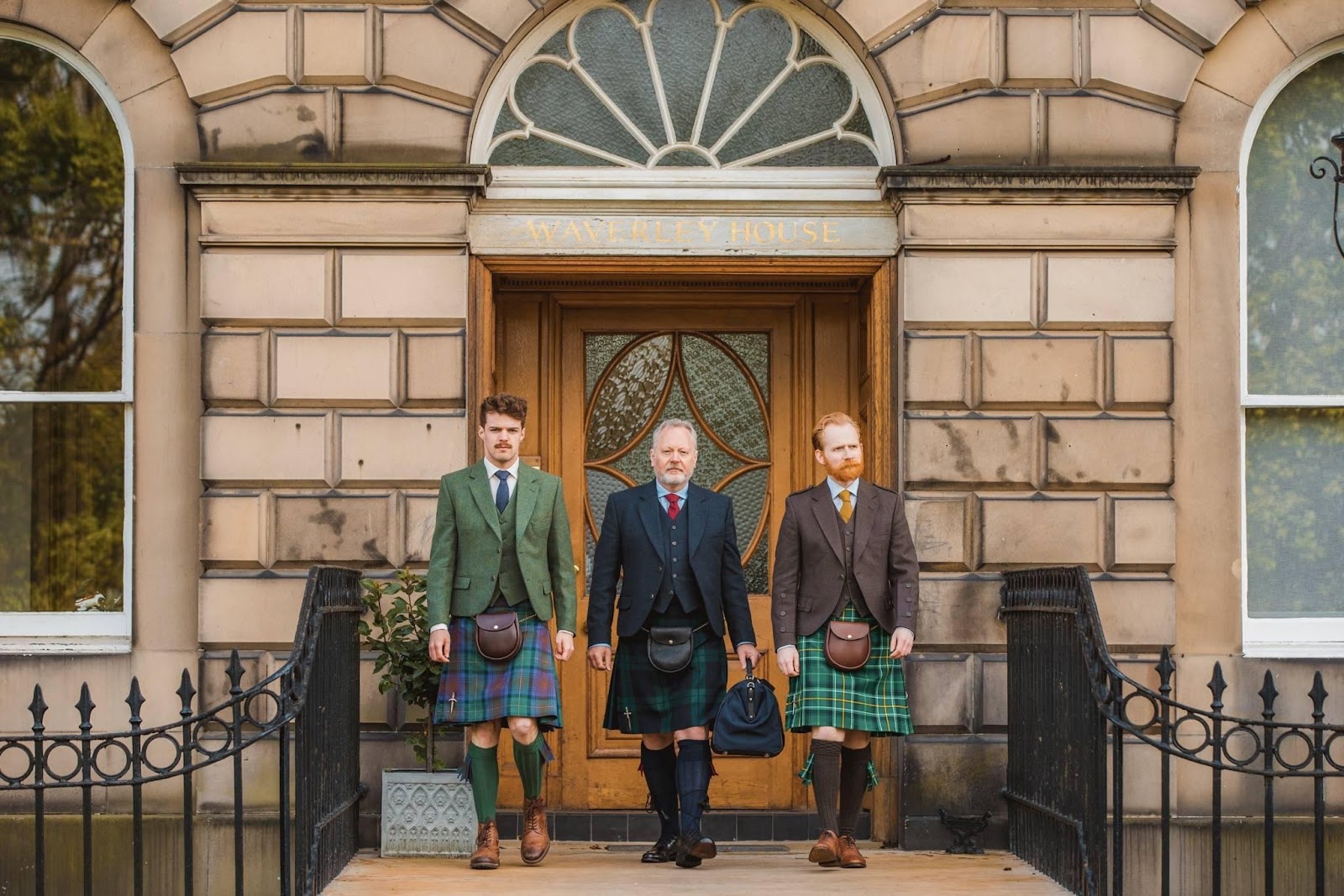The kilt, a garment that has stood the test of time, is not just a piece of clothing; it’s a symbol of rich cultural heritage and timeless elegance. Originating from the Scottish Highlands, the kilt has transcended its humble beginnings and become a globally recognized and cherished attire. In this blog post, we will delve into the history, significance, and enduring popularity of the traditional kilt, exploring the events that have played a pivotal role in keeping this iconic garment alive and thriving.
The Origins & Evolution of the Kilt
To truly appreciate the traditional kilt, one must journey back in time to its origins in the Scottish Highlands. The kilt, as we know it today, has evolved over centuries, influenced by Celtic traditions and practical considerations of the rugged Scottish terrain. Initially a practical garment for warriors, the kilt transformed into a symbol of Scottish identity and pride. Over the years, various tartans emerged, each with its own unique history and significance. Today, the traditional kilt is not just a piece of clothing; it’s a living testament to the resilience of Scottish culture.
The Significance of Tartan Patterns
At the heart of the kilt lies the intricate and meaningful tartan patterns. These patterns, woven into the fabric of the kilt, are more than just a visual delight—they carry stories of clans, families, and regions. The significance of tartan patterns goes beyond mere aesthetics; they serve as a form of identity, representing a connection to one’s roots and heritage. Understanding the stories behind different tartans adds depth to the experience of wearing and appreciating the kilt.
Here’s what makes the traditional kilt so special:
- Authenticity: It’s the oldest and most traditional form of kilt, dating back to the 16th century when Highlanders used it as a practical garment for working the land.
- Versatility: The 8-yard kilt can be worn in various ways. Traditionally, it was wrapped around the waist and secured with a leather belt, but it can also be folded and pinned to create a more modern kilt look.
- Elegance: The generous amount of fabric creates a flowing, dynamic look that’s perfect for formal occasions. Whether it’s a wedding, a ceilidh, or any special event, the 8-yard kilt adds a touch of timeless sophistication.
- Customizable: With endless tartan variations available, you can choose a pattern that reflects your family clan, Scottish heritage, or simply personal preference.
Investing in kilts is an investment in tradition and quality. It’s a garment that can be passed down through generations, becoming a cherished family heirloom. So, if you’re looking for a unique and meaningful piece of clothing that connects you to Scotland’s rich history and culture, the kilt is definitely worth considering.
Here are some additional benefits of the traditional kilt:
- Warmth: The thick wool fabric provides excellent insulation, making it ideal for cold weather.
- Comfort: The loose-fitting design allows for freedom of movement.
- Durability: A well-made 8-yard kilt can last for decades with proper care.
Celebrating Scottish Culture | Highland Games & Kilted Events
One cannot discuss the traditional kilt without delving into the lively and spirited events that celebrate Scottish culture. Highland Games, held in various parts of the world, provide a platform for enthusiasts to showcase their prowess in traditional Scottish sports, accompanied by the resplendent sight of kilts in a myriad of tartans. These events not only showcase athletic skills but also serve as a vibrant display of camaraderie and cultural pride. From caber tossing to pipe and drum competitions, Highland Games are a melting pot of tradition, competition, and celebration.
Modern Resurgence | Kilted Runs & Contemporary Fashion
In recent years, the traditional kilt has experienced a resurgence in popularity, not only in Scotland but worldwide. Kilted runs, where participants don kilts while undertaking athletic challenges, have become a global phenomenon. This modern adaptation highlights the adaptability and enduring appeal of the Traditional kilt. Moreover, contemporary fashion has embraced the kilt, with designers incorporating its timeless silhouette into everyday wear, bridging the gap between tradition and modernity.
Preserving Tradition in a Modern World
In an era dominated by fast fashion and fleeting trends, the traditional kilt stands as a beacon of enduring style and authenticity. Its resilience against the tides of time is a testament to the deep-seated cultural pride and the unwavering commitment of communities to preserve their heritage. Organizations dedicated to the promotion and preservation of Scottish culture play a crucial role in ensuring that the traditional kilt remains a cherished symbol for generations to come. Through educational programs, cultural events, and outreach efforts, these organizations foster an appreciation for the rich history and craftsmanship behind the kilt.
The Craftsmanship Behind the Kilt
Beyond its symbolic significance, the traditional kilt is a masterpiece of craftsmanship. Each kilt is meticulously tailored, with precise pleating, stitching, and detailing that reflect the artisanal skills passed down through generations. The process of creating a kilt involves a delicate dance between tradition and innovation, with modern tailors incorporating contemporary techniques while honoring time-honored methods. Exploring the craftsmanship behind the kilt adds another layer to the appreciation of this iconic garment, highlighting the dedication and skill required to create a garment that not only looks impeccable but also carries a profound cultural weight.
Global Impact | Mens Kilts Beyond Scotland
While the traditional kilt is deeply rooted in Scottish culture, its influence has transcended borders. Beyond the mist-covered hills of the Highlands, Mens Kilts have become a symbol of rebellion, pride, and individuality. From celebrities gracing red carpets in modern interpretations of the kilt to fashion enthusiasts incorporating its elements into their wardrobes, the global impact of the kilt is undeniable. This widespread recognition not only pays homage to Scottish heritage but also fosters a sense of interconnectedness, where people from diverse backgrounds find common ground in the appreciation of this timeless garment.
Looking Ahead | The Future of the Kilt
As we look ahead, the future of the kilt appears promising. Its ability to adapt to contemporary contexts while retaining its core essence ensures its relevance in an ever-changing world. The continued celebration of Scottish culture through events, education, and cultural exchanges will play a pivotal role in passing the torch to future generations. Whether worn with pride during cultural festivals or embraced as a fashion statement, the traditional kilt will continue to weave its way into the fabric of global culture, reminding us of the enduring allure of tradition and the stories woven into every pleat and thread.
Conclusion
In conclusion, the traditional kilt is more than just a garment; it’s a cultural symbol that has stood the test of time. From its humble origins in the Scottish Highlands to its global recognition today, the kilt represents a rich tapestry of history, identity, and pride. The events that celebrate Scottish culture play a crucial role in keeping the spirit of the traditional kilt alive, ensuring that future generations continue to appreciate and embrace this iconic piece of attire. As we don our kilts for Highland Games, kilted runs, or everyday wear, we become part of a tradition that transcends borders and connects us to a timeless legacy of elegance and cultural richness.













Leave a Reply